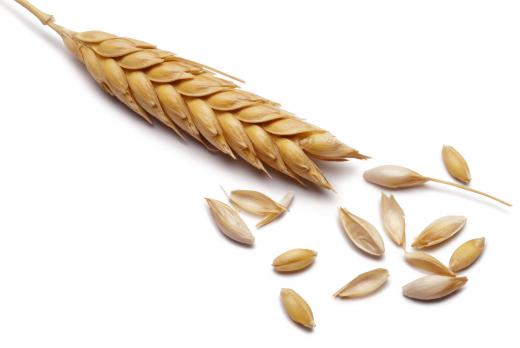Sometimes known as a grain elevator bin, a grain bin is a component of a grain elevator structure. Very often, the grain elevator, containing the grain bin, will also encompass grain silos and/or grain tanks, as well. Thus, grain bins, grain silos, and grain tanks are differentiating terms for methods of storage in the grain elevator structure. The grain elevator structure actually contains a bucket elevator that is used to haul the grain up to the top of the structure, where it is dumped into the bins, silos, or tanks.
In some cases, a fodder silo is mistaken for a grain bin, and vice versa. However, a fodder silo is more commonly a structure used for farm storage, the storage of cow fodder. The typical tower silo that can often be seen next to a dairy barn will usually contain “silage,” which is fermenting fodder for dairy cows. This fodder is necessary as feed for the dairy cows so that they can continue to produce milk during the winter months, usually their non-producing months.

Since the mid-1800s, silos have been used more frequently to store grain, though in many cases, they’re still called grain elevators. This is because they are often connected together to resemble a single structure. Moreover, the grouped-together grain silos are usually loaded by a single bucket elevator.
Though there are several methods used to empty the grain from a grain bin, tank, or silo, gravity is the preferred method. It is, however, usually only a part of the process, usually augmented by conveyors, sweep augers, and other mechanical unloading devices. A grain bin is generally unloaded by a gravity feed system to begin with. Doors are opened at the bottom of the bin and the bin essentially empties itself either directly into the carrier vehicle, or onto a conveyor. The conveyor system then feeds the grain into the bulk carrier.

Grain that remains at the flat bottom of the bin is swept to the unloading doors with a sweep auger. A sweep auger, one half the diameter of the bin, rotates around the bottom of the bin sweeping the leftover grain to the unloading doors. Thus, little of the grain is left in the bottom of the bin.
Grain tanks are unloaded a bit differently from bins and silos. Grain tanks are often conical at the bottom. Therefore, the grain is unloaded strictly by gravity feed. A grain silo, like a grain bin, usually requires the use of mechanical unloading equipment and conveyors to be emptied.
